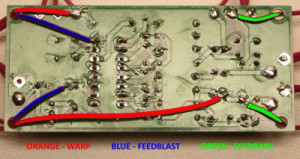Zodiac is a unique-sounding Virtual Instrument designed to provide composers and producers with a collection of original sounds and instruments suitable for film or TV scores, video games, and all types of ambient and experimental music.
No synthesizers were used to create the instruments in Zodiac. Instead, all instruments were created from organic sources such as found sounds, sonic manipulations inspired by classic Musique Concrete, Experimental and Avant Garde Music compositions, prepared or heavily processed musical instruments, and audio recordings subjected to extreme sound design techniques.
Zodiac features over 200 patches and Multis (over 8GB of uncompressed wav data), divided into six categories:
Pads & Atmospheres
Melodic Instruments
Bass Instruments
Percussive Instruments
Experimental Instruments
Zodiac Kits
Available now for $199.00 from Bigfishaudio.com
https://www.bigfishaudio.com/detail.html?4;16;1:::::::1681:::D1681::516870#







